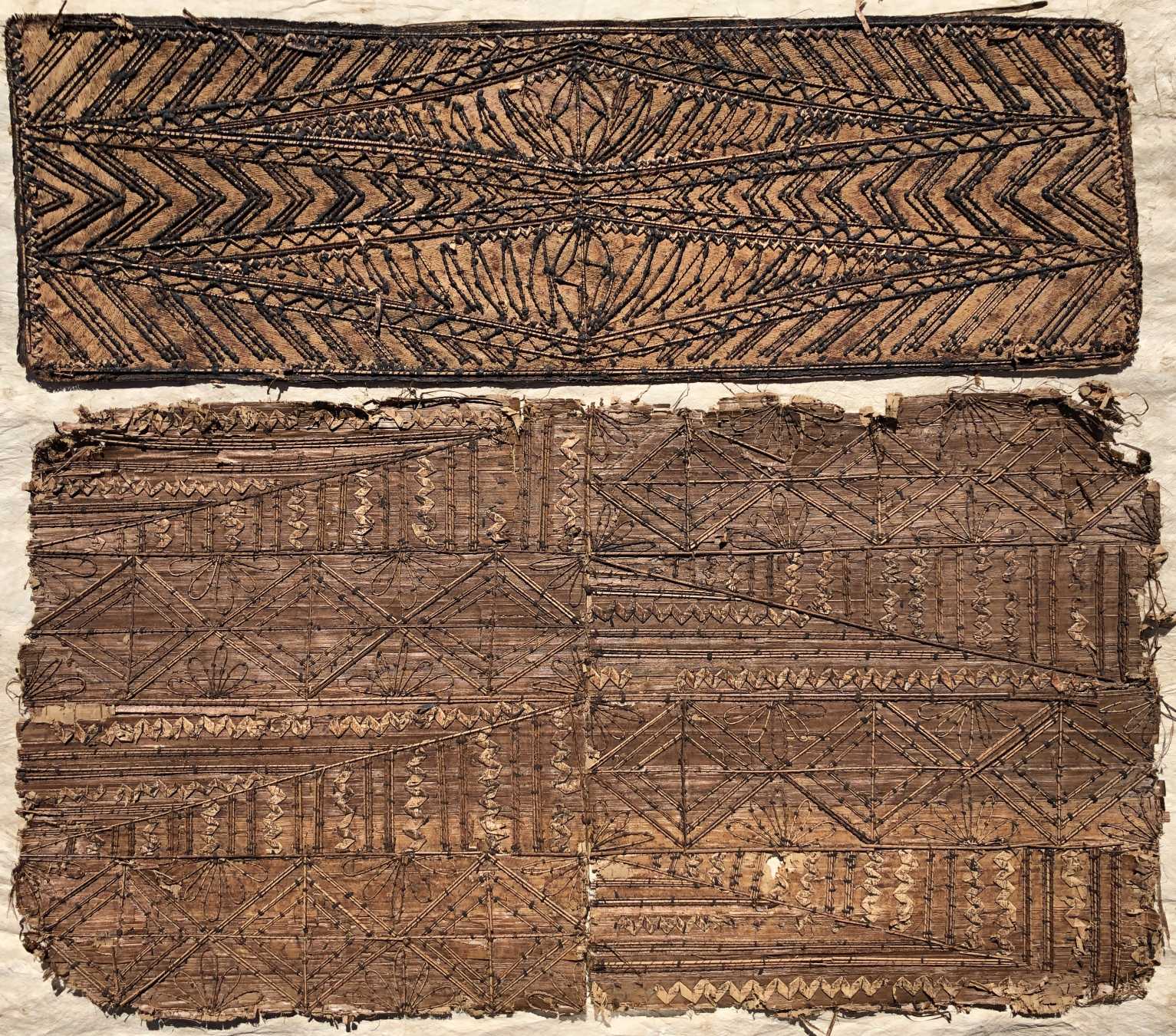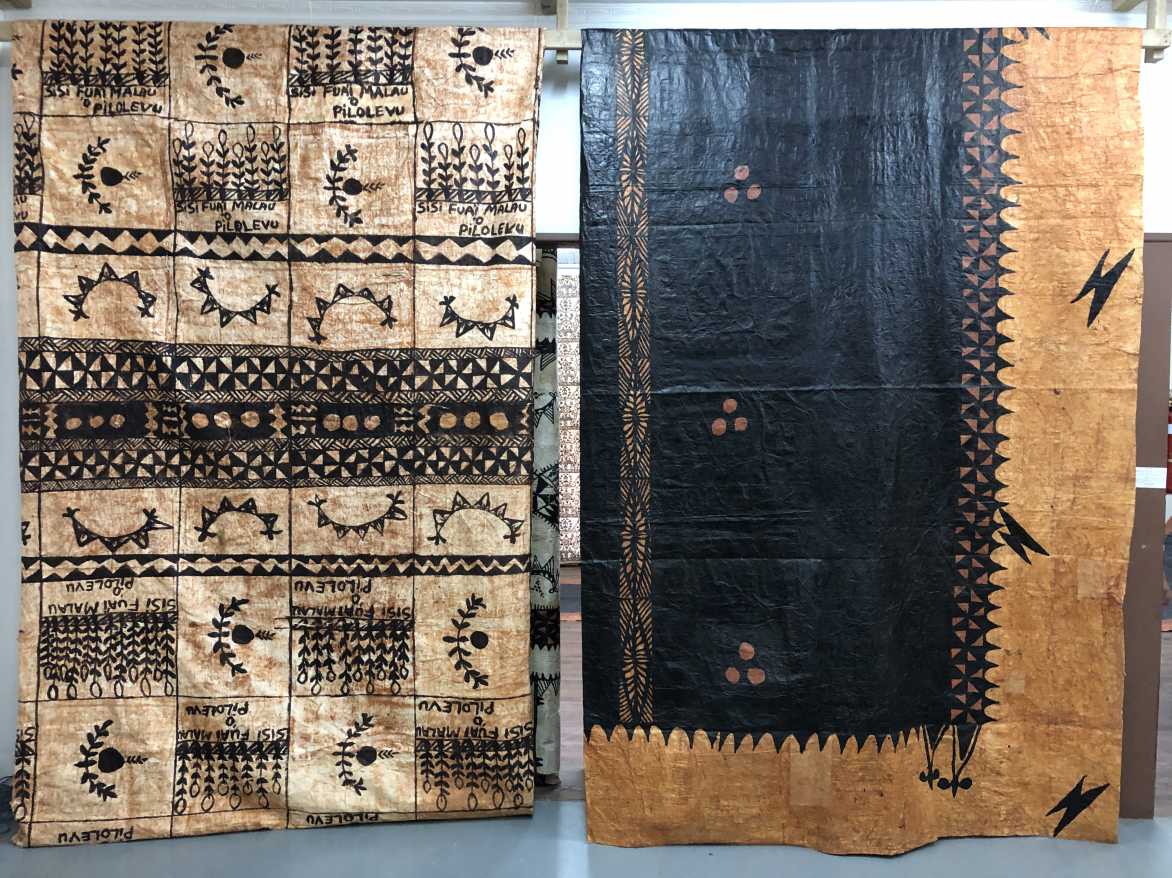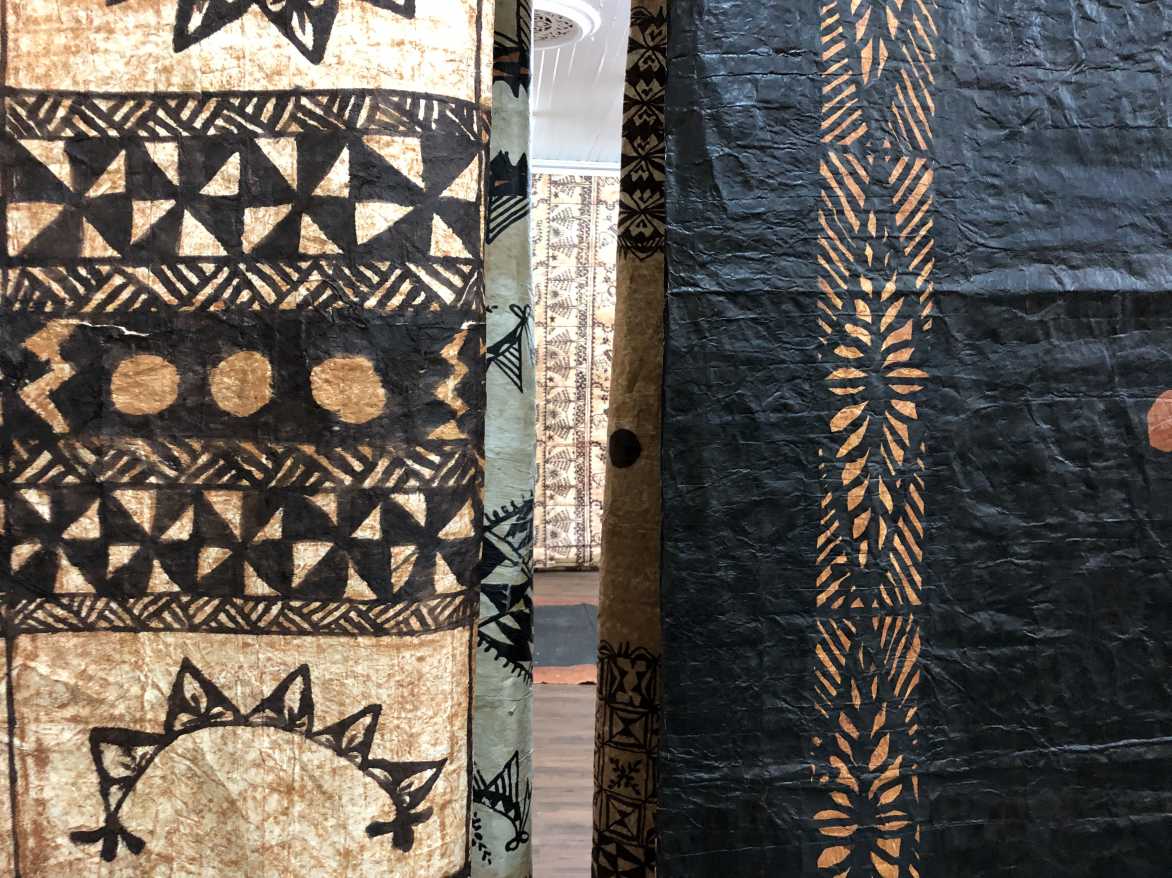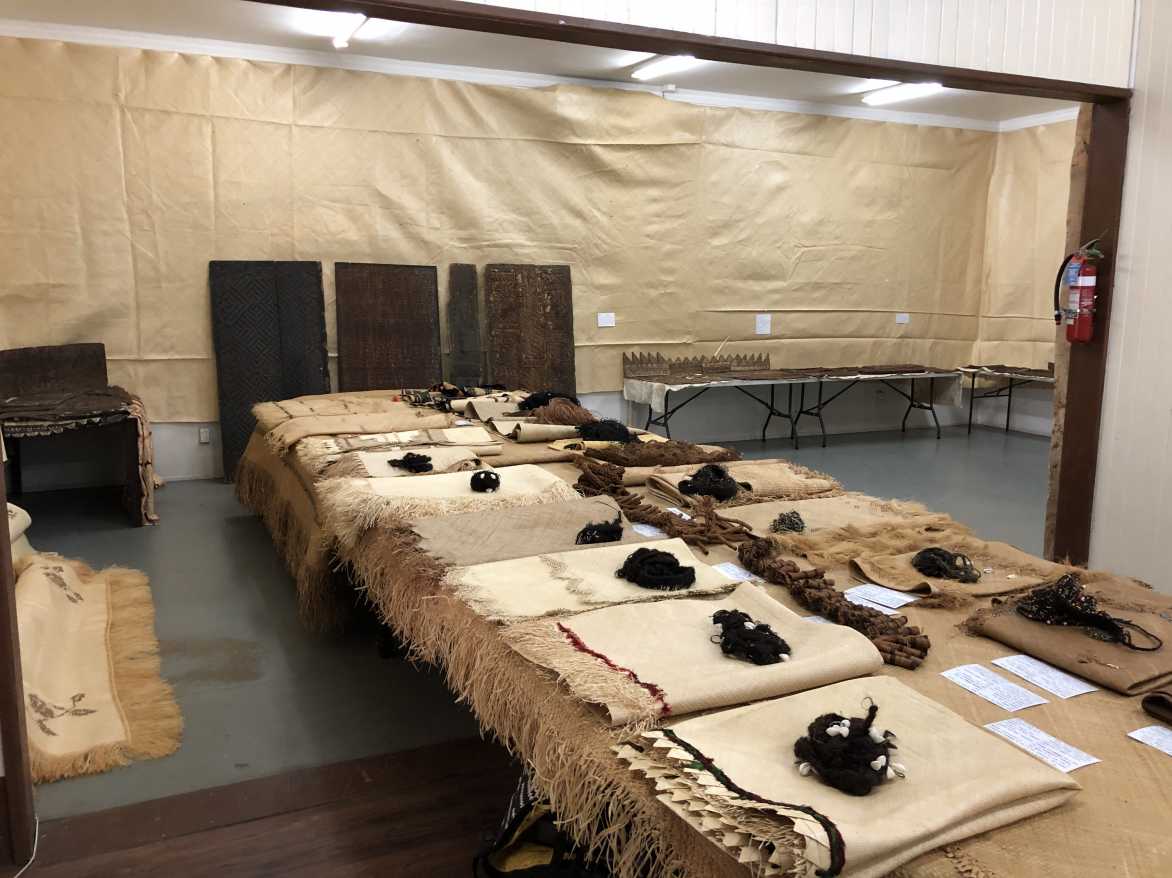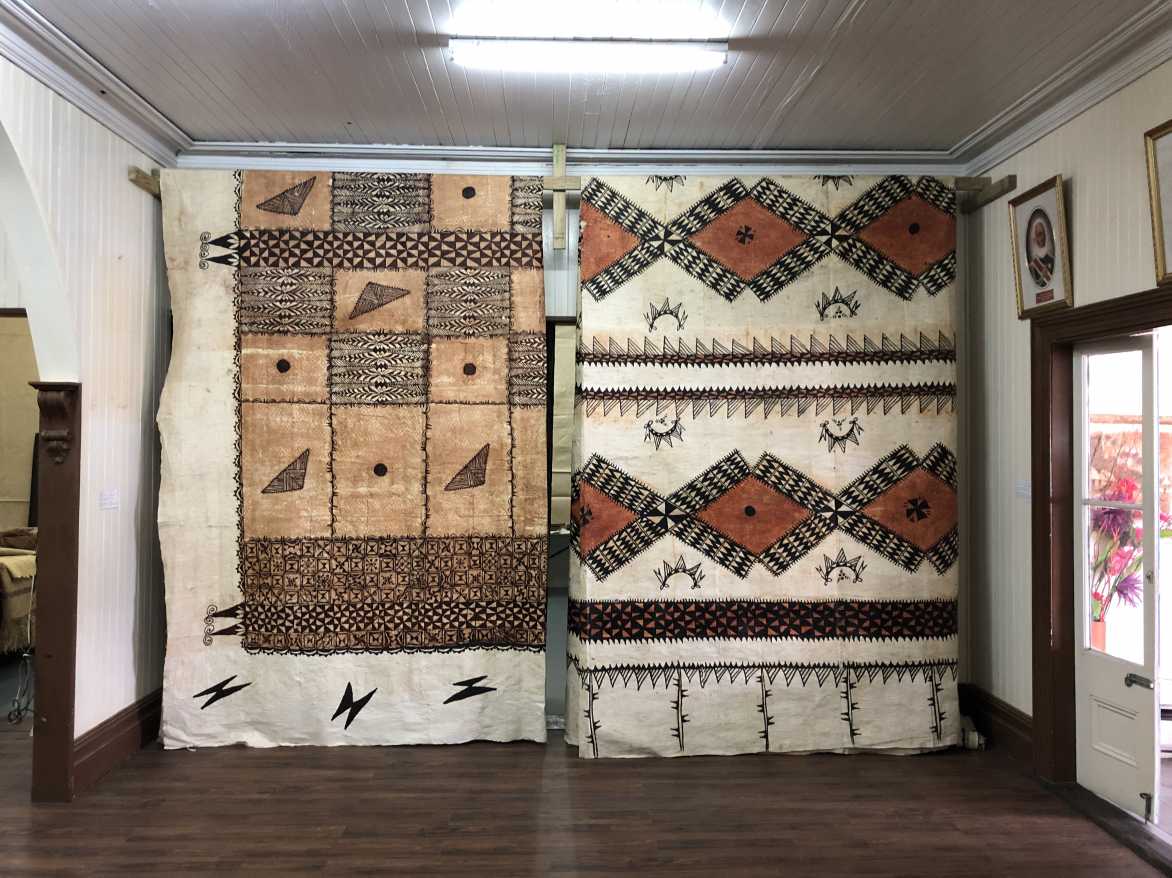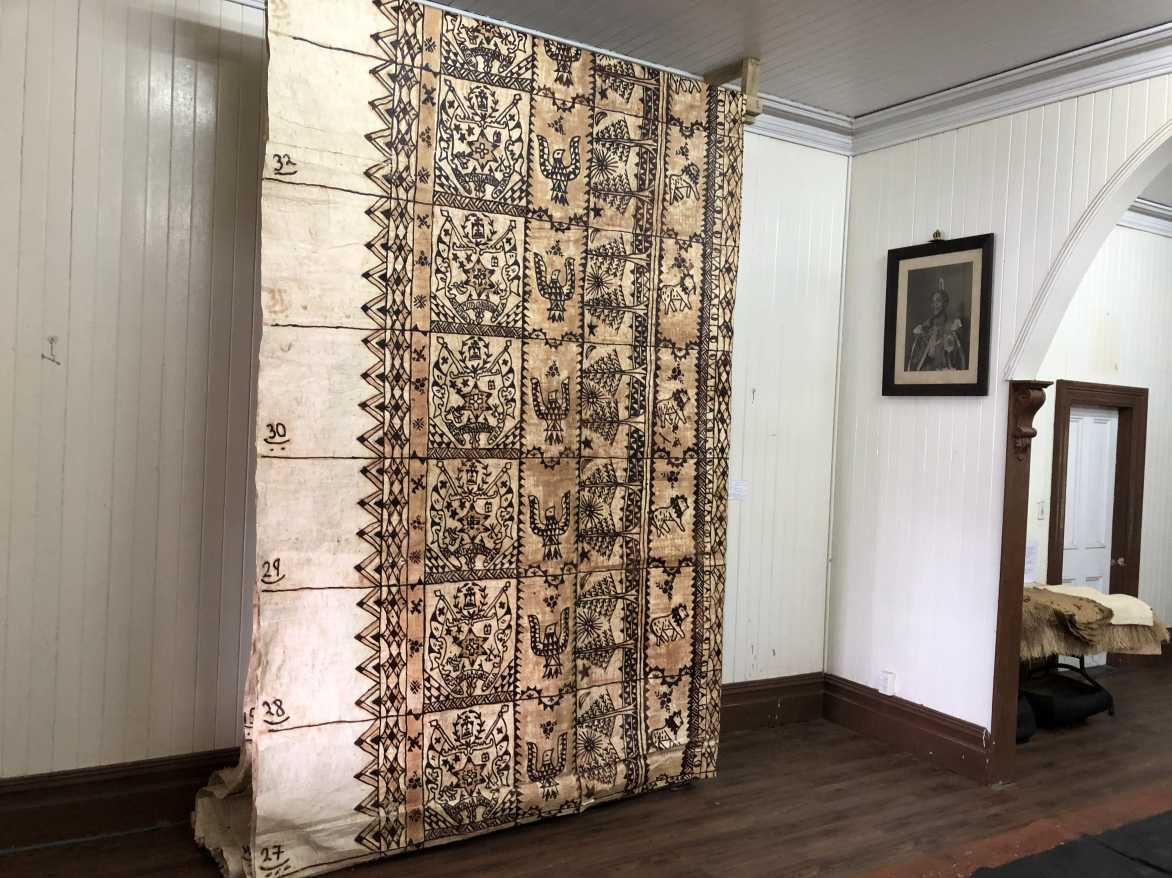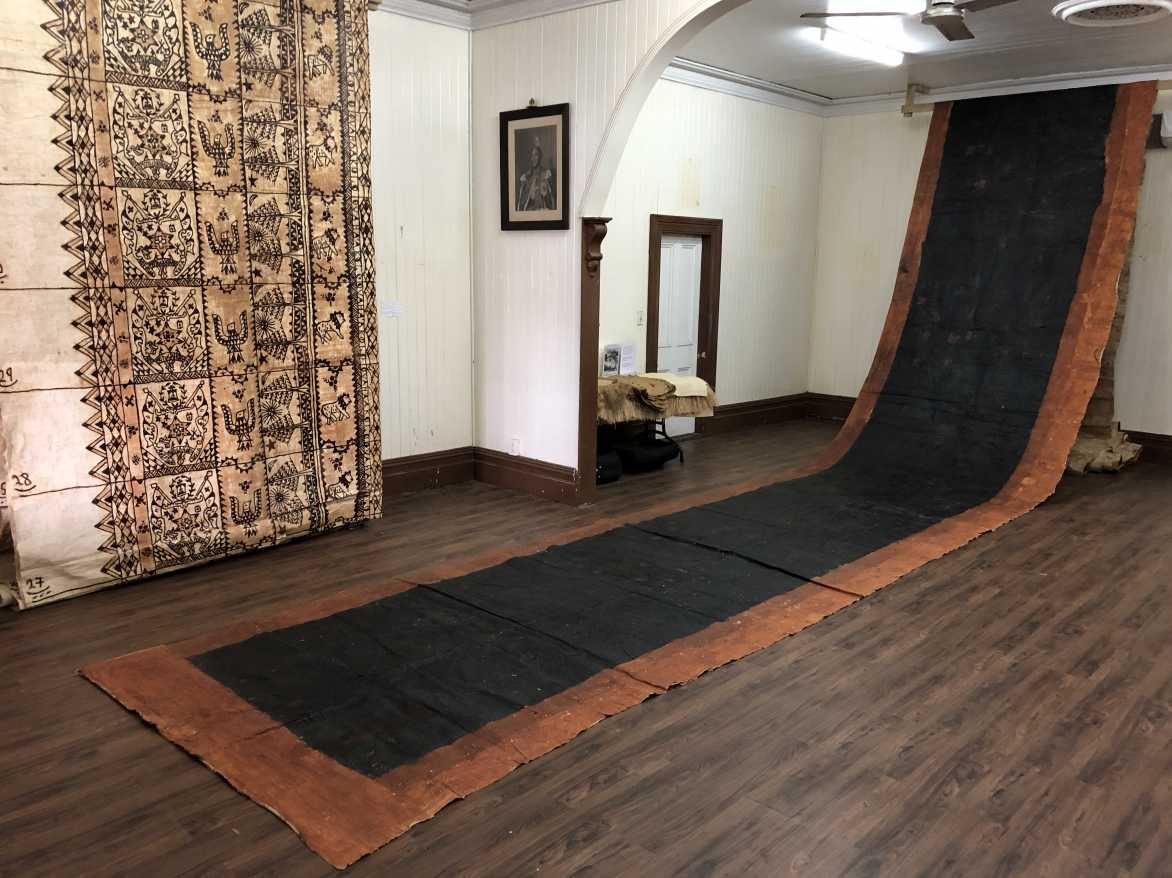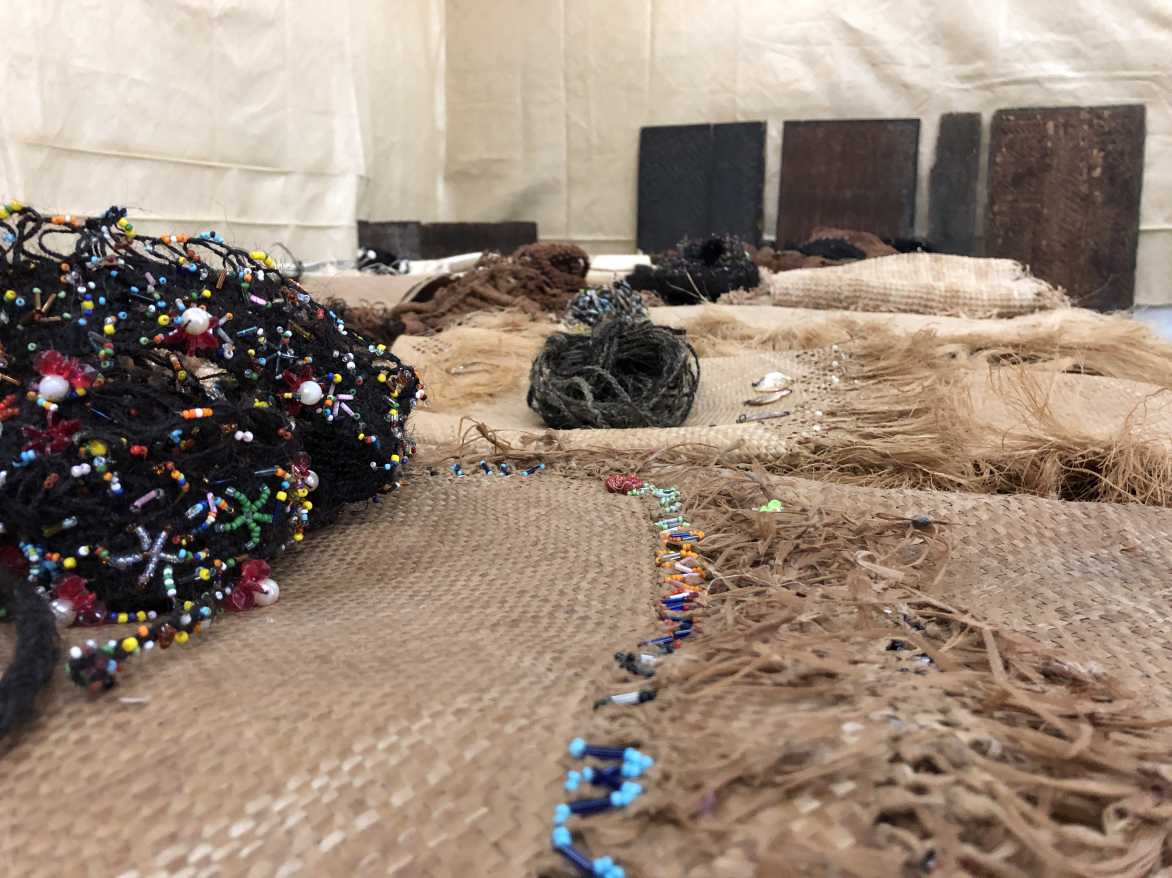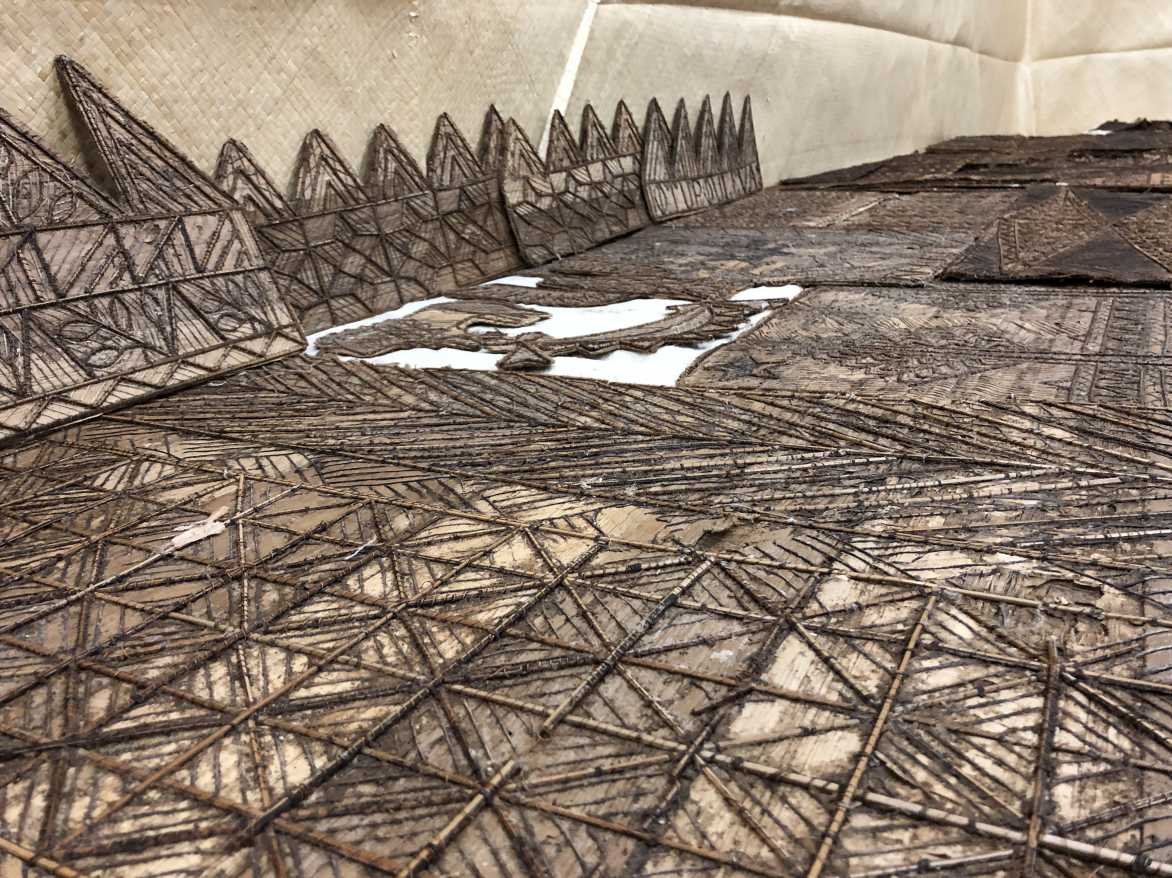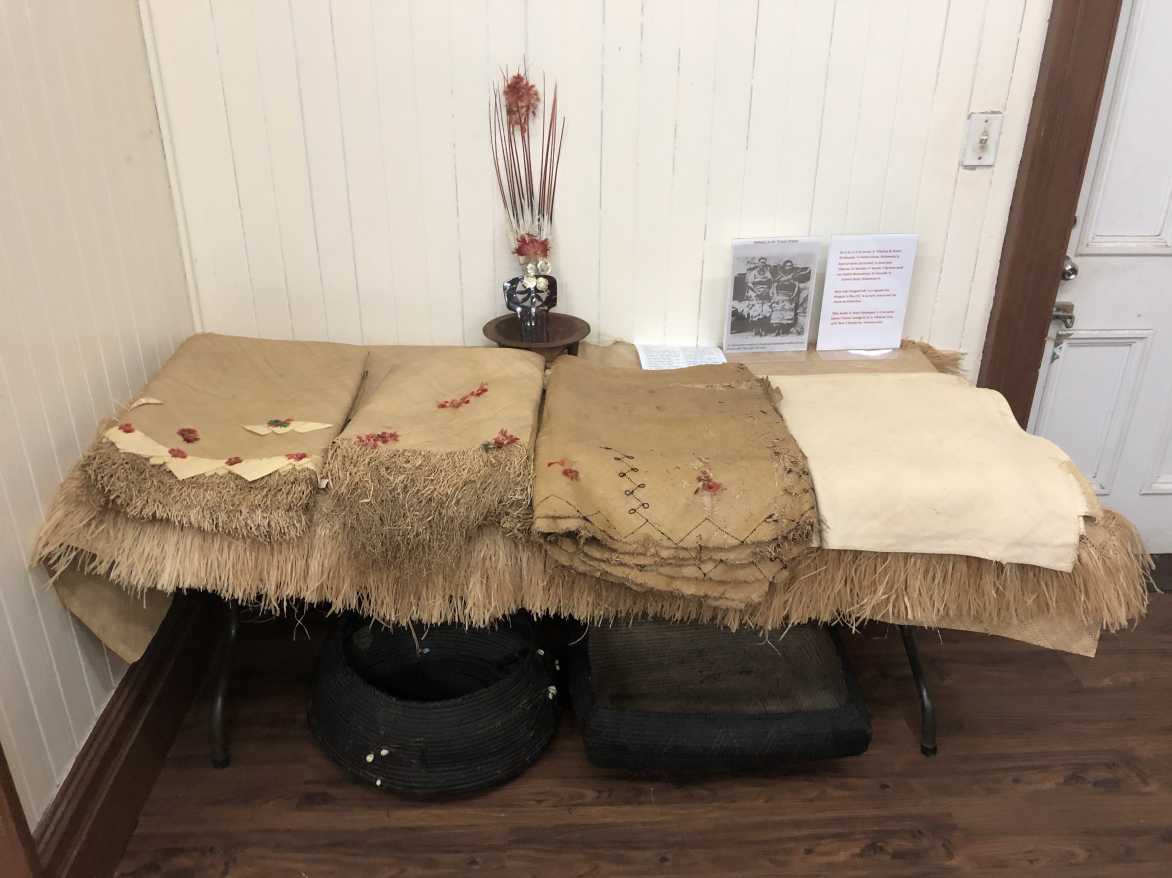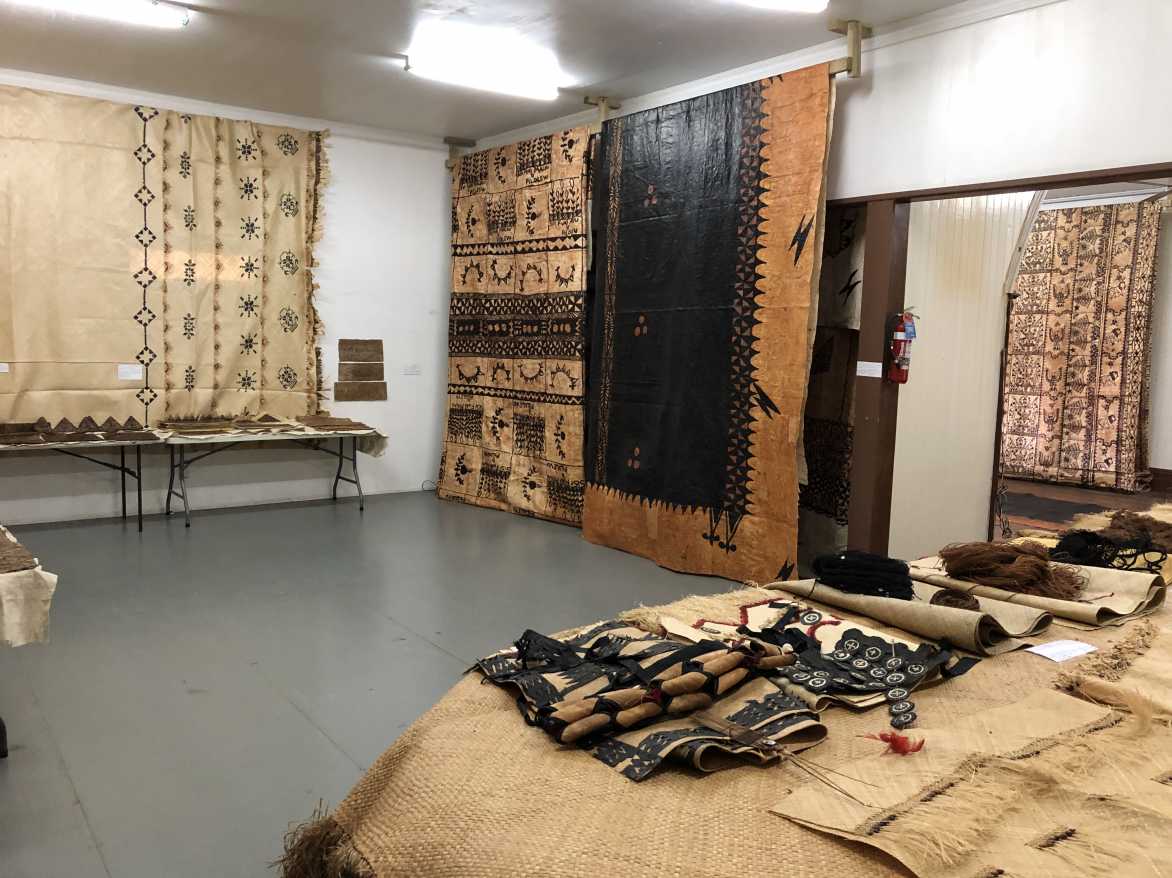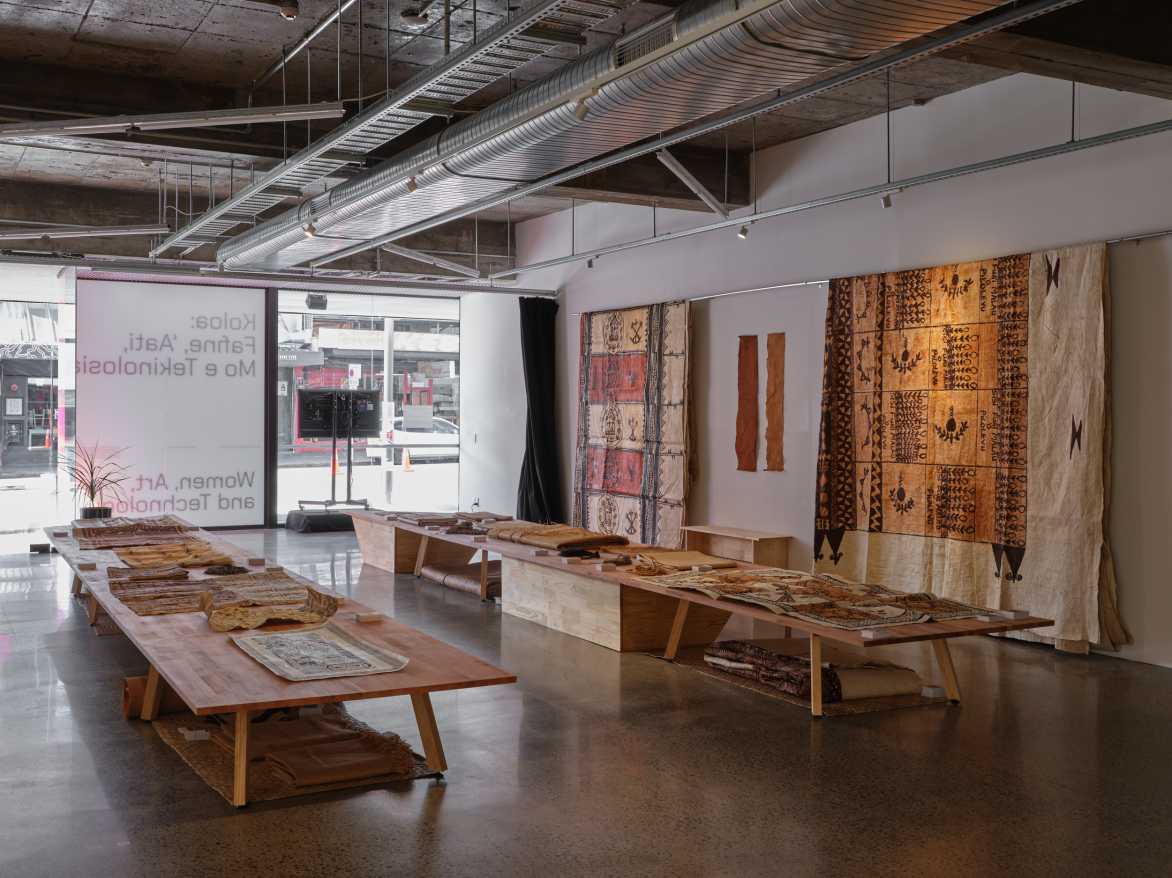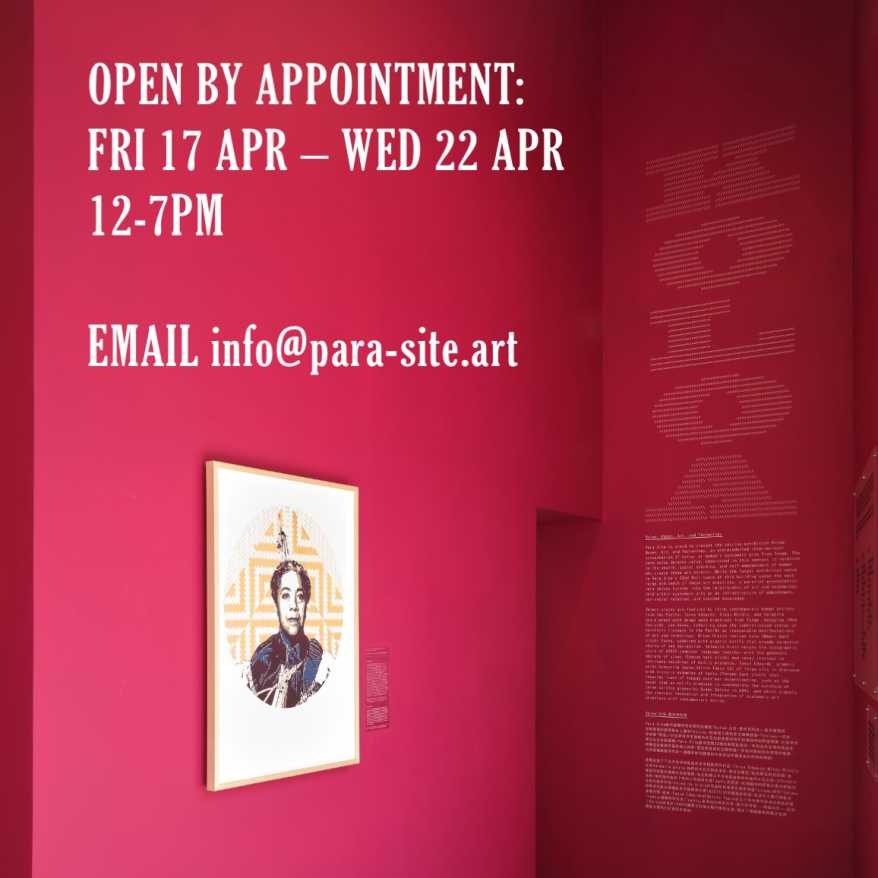
is proud to present the touring exhibition , an unprecedented international presentation of the life-long research of , one of the Kingdom of Tonga’s foremost knowledge-holders of customary arts. While has often been consulted and has written for major international research and museum projects, this will be the first exhibition that presents her exceptional work and perspective to both Tongan and international audiences under her acknowledged authorship.
Taken together, the art practices of weaving and bark-cloth making in Tonga are called , a term denoting value, understood in this context in relation to the wealth and self-empowerment of women who make these art objects. These artistic languages are extraordinary both for their stunning visual richness and for their significance as contemporary art practice. As such, they are works of highly sophisticated artistic, ecological, navigational, and socio-political complexity. Their inscription through material and graphic vocabularies trace patterns of exchange across the more than 200 islands of the Kingdom of Tonga, and beyond.
The exhibition will present the practice of (bark-cloth), a major form of contemporary art in Tonga, with both recent examples from active women’s groups as well as highly significant historical pieces. These will be presented in thematics that explore their making and designs, or , as well as their social function. In this way, the presentation will demonstrate the ongoing richness of as a sovereign aesthetics of Tonga’s flourishing indigenous nation in the Pacific. Extensive examples of fine-weaving will also be showcased including , , and mats, as well as the ties or used to bind woven textiles as worn garments. Styles of weaving will be explored in their connection to particular plant fibres and the particular island contexts that they arise from, as well as their role in different social circumstances.
Organising this exhibition within a contemporary art institutional framework affirms a commitment to expanding what is acknowledged as contemporary artistic practices. It responds to this political agenda to decolonise our taxonomies and perspectives and to move beyond the category of art as defined by the colonial legacy, by including artists working with and from within multiple aesthetic and cosmological perspectives and meanings, manifesting the multiplicities that construct our kaleidoscopic global reality. This includes as a matter of urgency practices that have been systematically excluded from the realm of art and designated by a colonial ethnographic gaze as craft, folklore, or at best, “traditional” art, even if these practices often perform analogous cultural and social functions in their communities as art does in the system of global society. The presentation and reception of such work in the changing and critical field of contemporary art recognises the same evolving nature of these practices, as well as their potential for a critical reflection of their contexts, as opposed to the static and obedient character assigned to them by the Westerncentric perspective.
The exhibition is curated by , and co-curated by (Executive Director / Curator of , Hong Kong) and (Director of , Amsterdam). The project is coordinated by exhibition managers and . in is presented in partnership with and supported by .
Following the exhibition’s inauguration at the in , it will be presented at in Hong Kong in December 2019.
